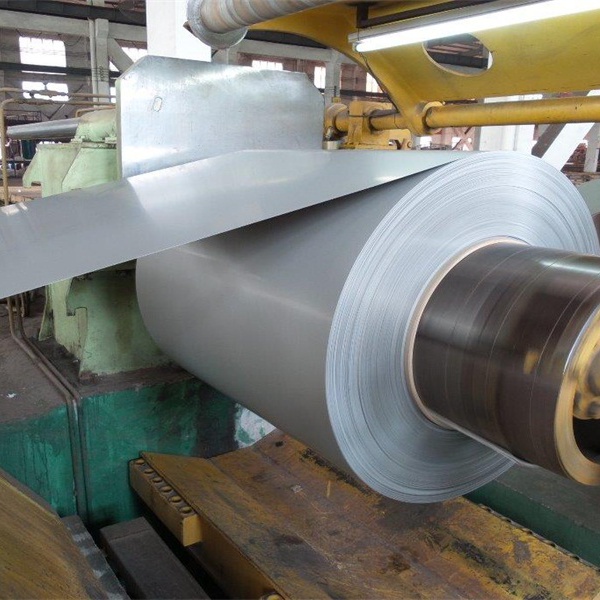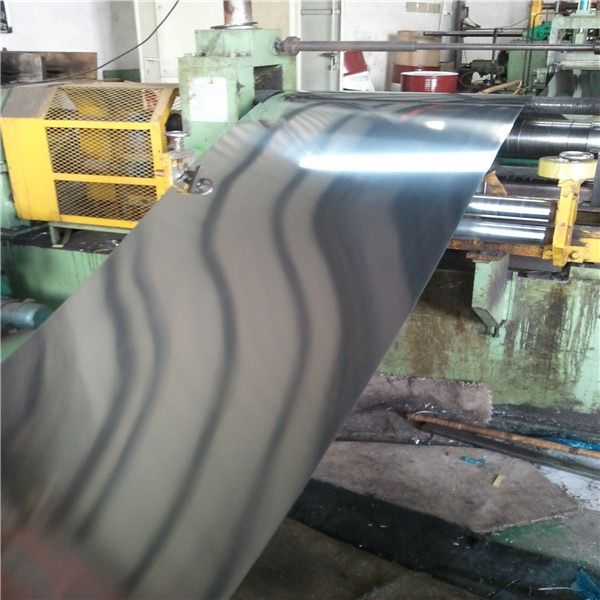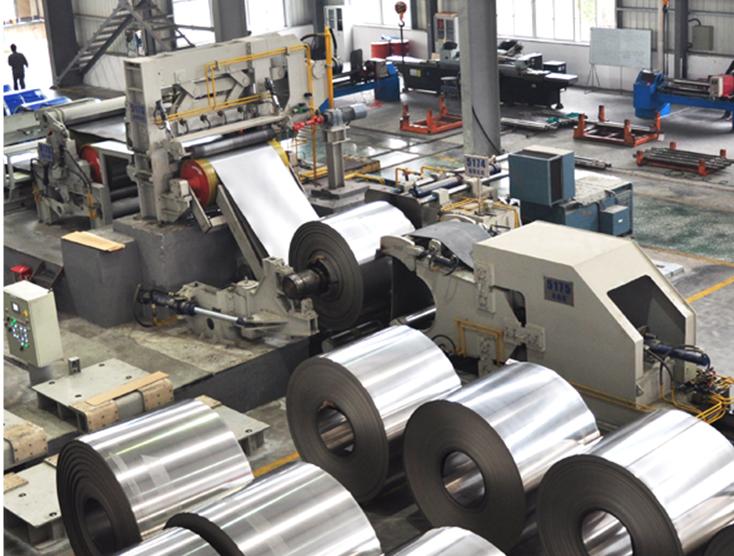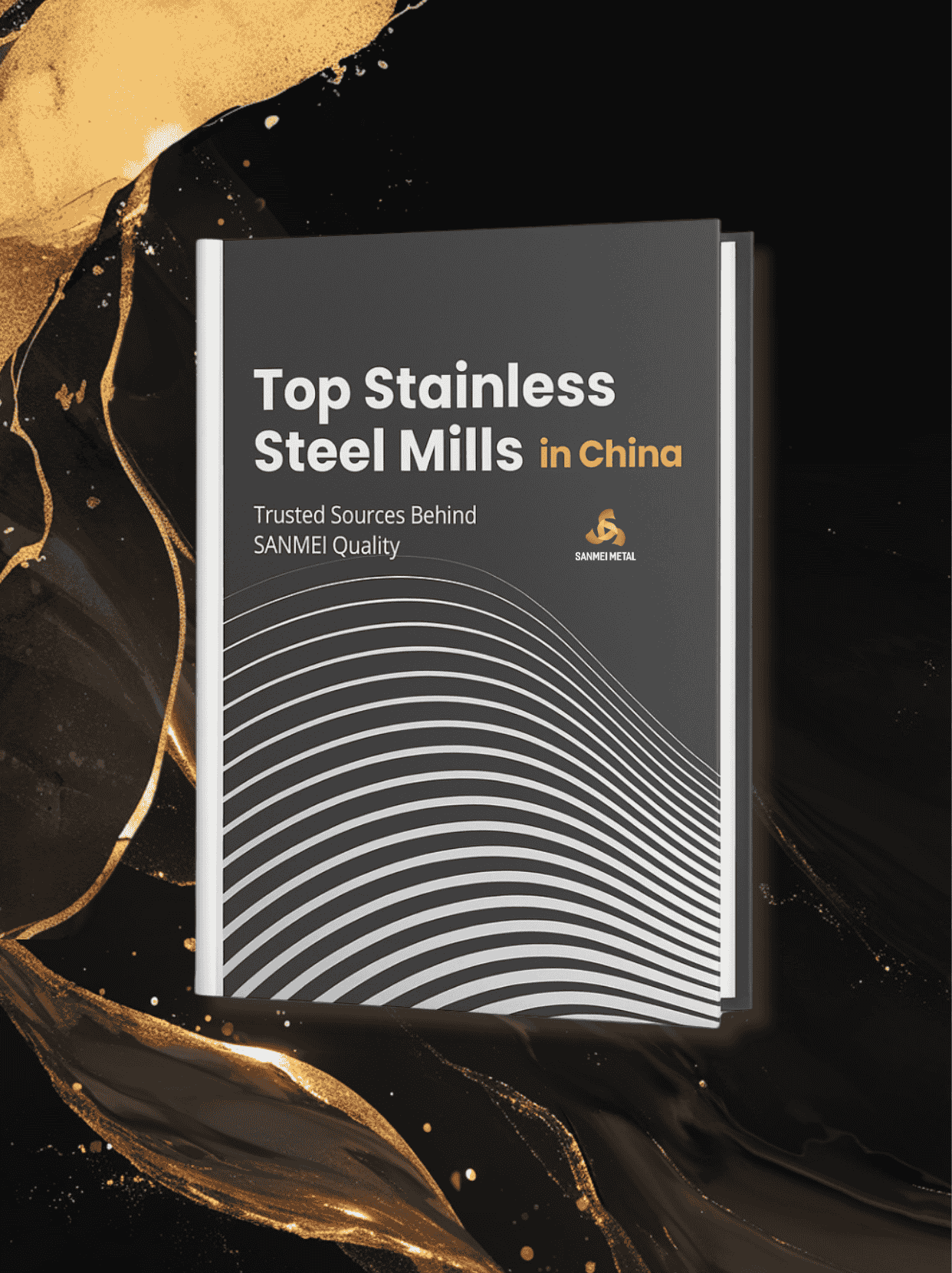Acabamento em aço inoxidável 2B vs BA: 6 diferenças principais explicadas
O aço inoxidável, com sua durabilidade excepcional e apelo estético, desempenha um papel vital em diversos setores. Seu acabamento superficial impacta significativamente seu desempenho, aparência e adequação a aplicações específicas. Entre os diversos tratamentos de superfície do aço inoxidável, 2B e BA são os mais utilizados. Este artigo aborda as diferenças técnicas, as aplicações e como escolher o acabamento mais adequado para o seu projeto.
O que é tratamento de superfície 2B?

O acabamento em aço inoxidável 2B é uma superfície de aço inoxidável laminada a frio que passa por um processo de laminação preciso, resultando em uma aparência cinza fosca uniforme.
O valor Ra de um acabamento 2B normalmente varia de 0,1 a 0,5 micrômetro, dependendo da espessura do material. Com o eletropolimento, esse valor pode ser reduzido ainda mais para entre 4 e 32 micropolegadas (0,1 a 0,8 micrômetro).
O 2B é conhecido por sua excelente usinabilidade, tornando-o ideal para operações como estampagem profunda, dobra e soldagem, sem comprometer a integridade estrutural.
No mercado de aço inoxidável, o acabamento 2B costuma ser o padrão para produtos laminados a frio, como bobinas, chapas e tiras, especialmente em graus 304 e 430, devido à sua relação custo-benefício e propriedades versáteis.
O que é tratamento de superfície BA?

O aço inoxidável BA (Bright Annealed) é produzido por meio de um processo controlado de recozimento brilhante em uma atmosfera livre de oxigênio, prevenindo a oxidação e resultando em uma superfície lisa e reflexiva.
O valor Ra de um acabamento BA normalmente varia de 0,05 a 0,1 micrômetro, proporcionando uma superfície lisa, semelhante a um espelho, com clareza e refletividade superiores.
O processo de recozimento brilhante garante oxidação mínima ao mesmo tempo em que confere uma textura de superfície mais fina, tornando o BA ideal para ambientes que exigem alta limpeza e uma aparência visualmente marcante.
6 principais diferenças entre acabamentos de superfície 2B e BA

Recurso | Superfície 2B | Superfície BA |
1. Brilho | Acabamento fosco e baixo brilho | Acabamento espelhado de alto brilho |
2. Rugosidade da superfície (Ra) | Ra 0,1 - 0,5μm | Ra 0,05 - 0,1μm |
3. Refletividade | 40% - 60% | 70% - 90% |
4. Desempenho de processamento | Excelente para estampagem, dobra e soldagem | Sensível a arranhões, requer manuseio cuidadoso |
5. Aplicações | Equipamentos industriais, de cozinha, arquitetônicos | Eletrodomésticos de alta qualidade, arquitetura, médicos |
6. Custo | Menor custo, custo-efetivo para produção em massa | Custo mais alto devido ao processamento adicional |

Quer ver uma comparação mais óbvia? Para mais detalhes, assista ao vídeo abaixo.
Aplicações detalhadas de acabamentos de superfície 2B e BA

Aplicações de superfície 2B
O acabamento 2B é ideal para produtos que exigem pós-processamento ou uma superfície funcional e durável. Aplicações comuns incluem:
- 304/316 Série: Utensílios de cozinha, equipamentos industriais, componentes automotivos.
- 430 Série: Escapamentos automotivos, eletrodomésticos, componentes industriais que não exigem alto brilho.
- 201 Série: Produtos com custo-benefício, como utensílios de cozinha baratos ou componentes estruturais não corrosivos.
Aplicações de Superfície BA
O acabamento BA é indicado para aplicações que exigem apelo estético, alta refletividade e facilidade de limpeza. Usos típicos incluem:
- 304/316 Série: Eletrodomésticos de cozinha de alta qualidade, painéis decorativos e elementos arquitetônicos.
- Série 316L: Equipamentos médicos, ambientes de processamento de alimentos onde higiene e aparência são essenciais.
Atualizando 2B para BA

Embora o polimento 2B possa ser realizado para se aproximar da qualidade visual do BA, alcançar o verdadeiro acabamento espelhado do BA exige mais do que apenas polimento mecânico. Técnicas como eletropolimento e polimento abrasivo diamantado podem melhorar a lisura da superfície e aproximá-la de um acabamento semelhante ao BA. No entanto, mesmo com esses métodos, o brilho e a uniformidade do acabamento BA, obtidos por meio do recozimento brilhante, são tipicamente superiores.
Ao considerar a atualização de uma superfície 2B para BA, é importante ponderar os custos envolvidos no processo de polimento em relação aos potenciais benefícios. Embora seja possível simular um acabamento BA, o processo pode não replicar totalmente a precisão e a consistência do BA produzido em fábrica, especialmente para aplicações de alta qualidade ou visualmente exigentes.
Conclusão
- Escolha BA:Quando o apelo estético e a alta refletividade são essenciais, como em eletrodomésticos de luxo, elementos arquitetônicos e equipamentos médicos.
- Escolha 2B:Quando você precisa de uma superfície durável e econômica que possa suportar processamento adicional, ideal para componentes industriais, peças automotivas e produtos com baixo custo.
Ao compreender as diferenças técnicas e as aplicações dos acabamentos 2B e BA, você poderá tomar uma decisão informada que se alinhe aos requisitos do seu projeto, garantindo o melhor equilíbrio entre funcionalidade, estética e custo-benefício. Para aconselhamento mais personalizado ou assistência na sua escolha, sinta-se à vontade para consultar nossos especialistas em aço inoxidável, que podem ajudar você a escolher o acabamento ideal para suas necessidades específicas.









[…] com uma aparência altamente refletiva, quase espelhada. É significativamente mais refletivo do que um acabamento 2B² e geralmente mais liso. Lembro-me de um projeto com um integrador de equipamentos no Oriente Médio que estava […]